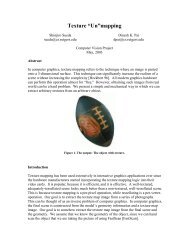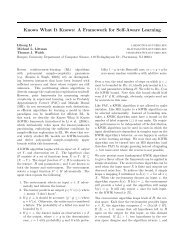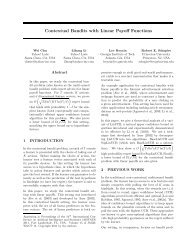Composition theorems in communication complexity
Composition theorems in communication complexity
Composition theorems in communication complexity
Create successful ePaper yourself
Turn your PDF publications into a flip-book with our unique Google optimized e-Paper software.
Proof. Recall that an irreducible character χ of G is the tensor product of irreducible characters<br />
χ i of each component group G i . Let Hard be the set of irreducible characters χ with<br />
more than d non-identity component characters. Fix a hard character χ, and denote by S<br />
the set of coord<strong>in</strong>ates of its non-identity characters.<br />
‖[χ(g(x, y))]‖ = ‖ ⊗ i∈[t][χ i (g i (x i , y i ))]‖<br />
= ∏<br />
‖[χ i (g i (x i , y i ))]‖<br />
i∈[t]<br />
= ∏ ‖[χ i (g i (x i , y i ))]‖ × ∏ ‖J |Xi|×|Y i|‖<br />
i∈S<br />
i /∈S<br />
= ∏ ‖M χi◦g i<br />
‖ × ∏ √<br />
size(M gi )<br />
i∈S<br />
i /∈S<br />
Thus by Theorem 11 and Eq. (5), we have<br />
√<br />
∏ size(Mgi )<br />
Q(A) ≥ log 2 − O(1) (10)<br />
deg(χ i ) · ‖M χi◦g i<br />
‖<br />
prov<strong>in</strong>g the theorem.<br />
i∈S<br />
Previous sections as well as [SZ09b] consider the case where all g i ’s are the same and all<br />
G i ’s are Z 2 . In this case, the above bound is equal to the one <strong>in</strong> Theorem 8, and the follow<strong>in</strong>g<br />
proposition says that the group <strong>in</strong>variance condition degenerates to the strongly balanced<br />
property.<br />
Proposition 5. For G = Z ×t<br />
2 , the follow<strong>in</strong>g two conditions for g = (g 1, · · · , g t ) are equivalent:<br />
1. The multisets S x,x′ = {(g(x, y), g(x ′ , y)) : y ∈ Y } and T y,y′ = {(g(x, y), g(x, y ′ )) : x ∈ X}<br />
are G <strong>in</strong>variant for any (x, x ′ ) and any (y, y ′ ),<br />
2. Each matrix [g i (x i , y i )] x i ,yi is strongly balanced.<br />
Proof. 1 ⇒ 2: S x,x′ be<strong>in</strong>g G <strong>in</strong>variant implies that for all {z i }, {u i }, {v i },<br />
|{y : z i g i (x i , y i ) = u i , z i g i (x ′i , y i ) = v i , ∀i}|<br />
=|{y : g i (x i , y i ) = u i , g i (x ′i , y i ) = v i , ∀i}|.<br />
Take x ′ = x and u = v. Now for each i and each row x i , take z i = −1 (where the group Z 2<br />
is represented by {±1}). For all other i ′ ≠ i, take z i ′ = 1. This assignment will show that<br />
|{y : g i (x i , y i ) = −u i }| = |{y : g i (x i , y i ) = u i }|.<br />
That is, the row x i <strong>in</strong> matrix [g i (x i , y i )] is balanced. Similarly we can show the balance for<br />
each column.<br />
2 ⇒ 1: It is enough to show that for each i and each {z i }, {u i }, {v i },<br />
|{y i : z i g i (x i , y i ) = u i , z i g i (x ′i , y i ) = v i }|<br />
=|{y i : g i (x i , y i ) = u i , g i (x ′i , y i ) = v i }|.<br />
First consider the case x ′i = x i . If u i ≠ v i then both numbers are 0; if u i = v i then both<br />
numbers are |{y i }|/2 by the balance of row x i . Now assume x ′i ≠ x i . Denote a bb ′ = |{y i :


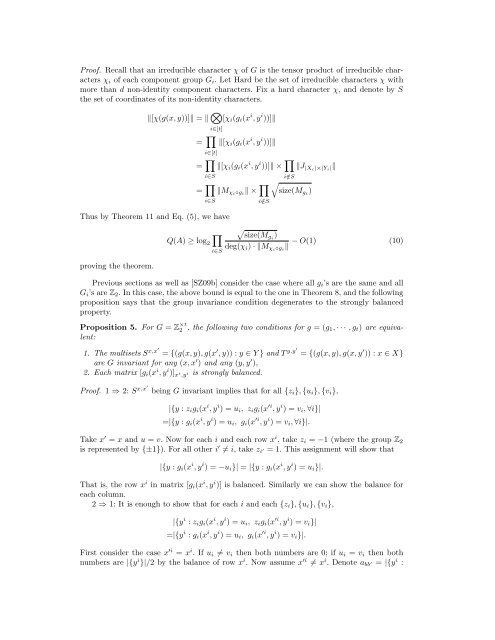

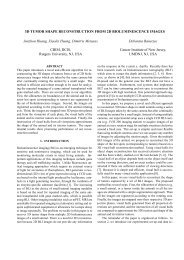
![Twitter[PDF]](https://img.yumpu.com/25710531/1/190x143/twitterpdf.jpg?quality=85)

